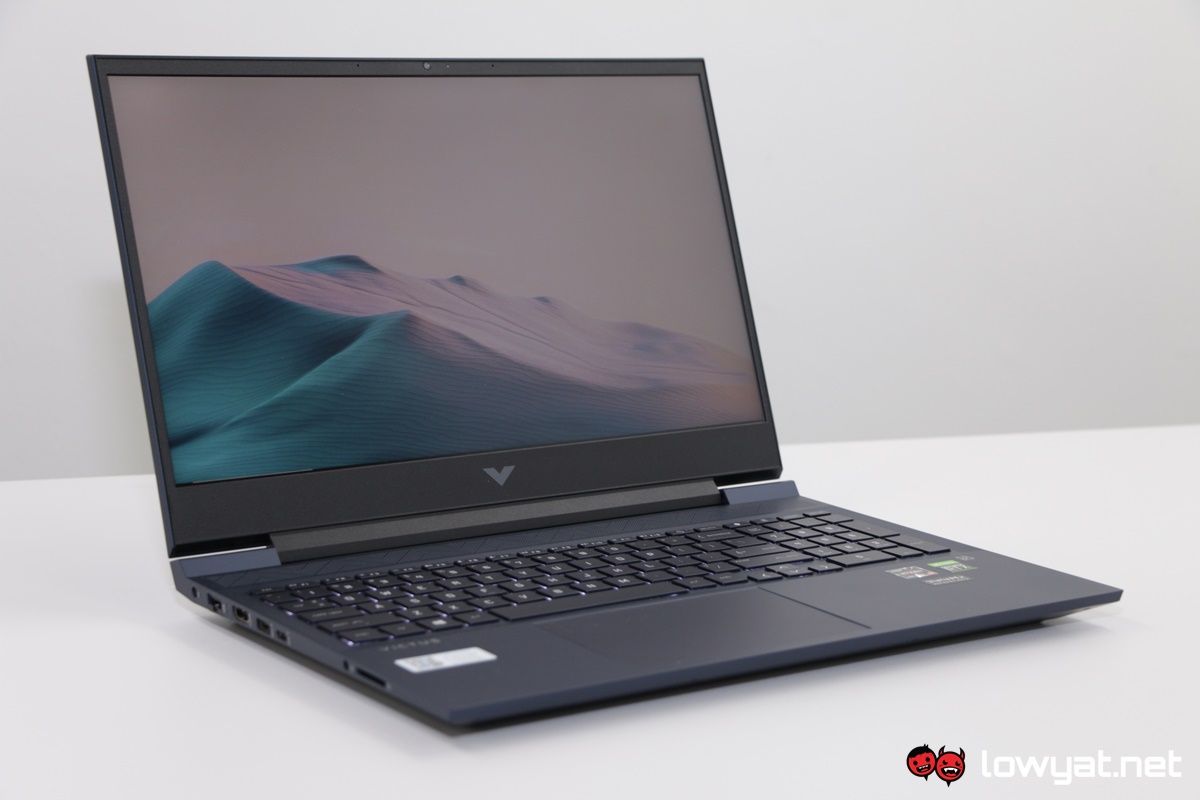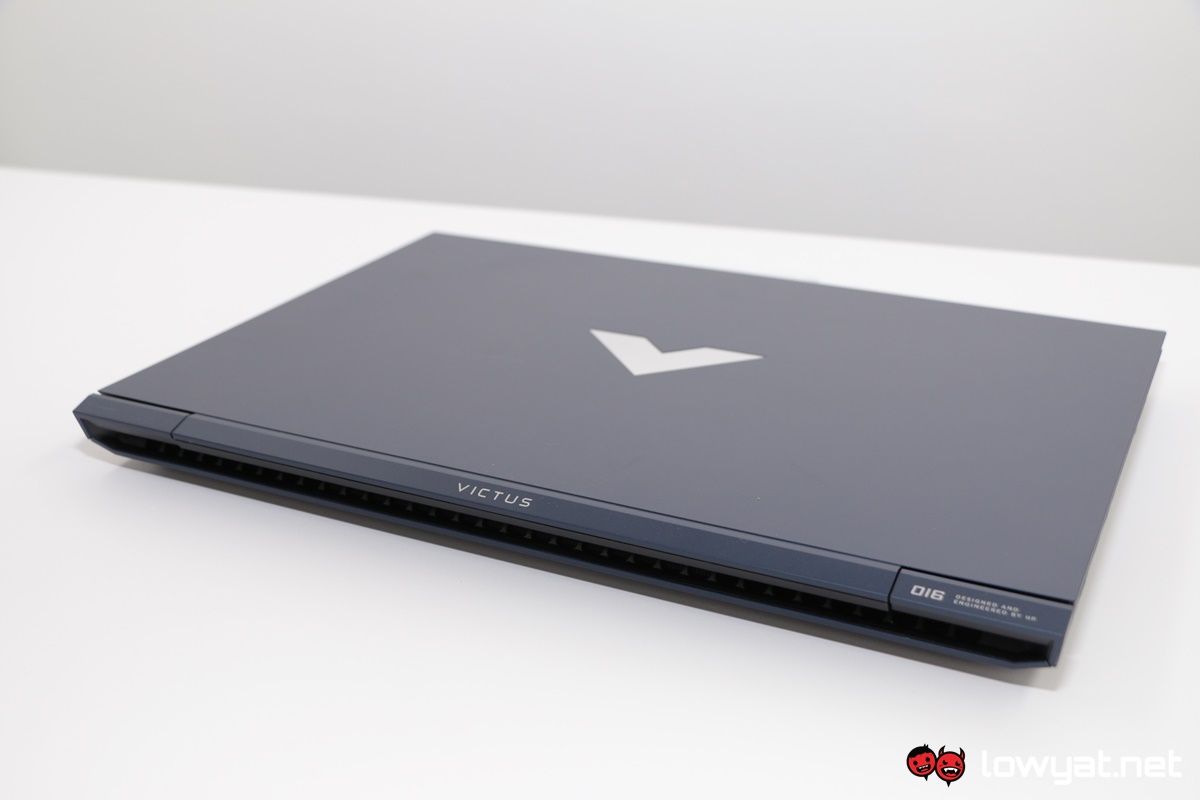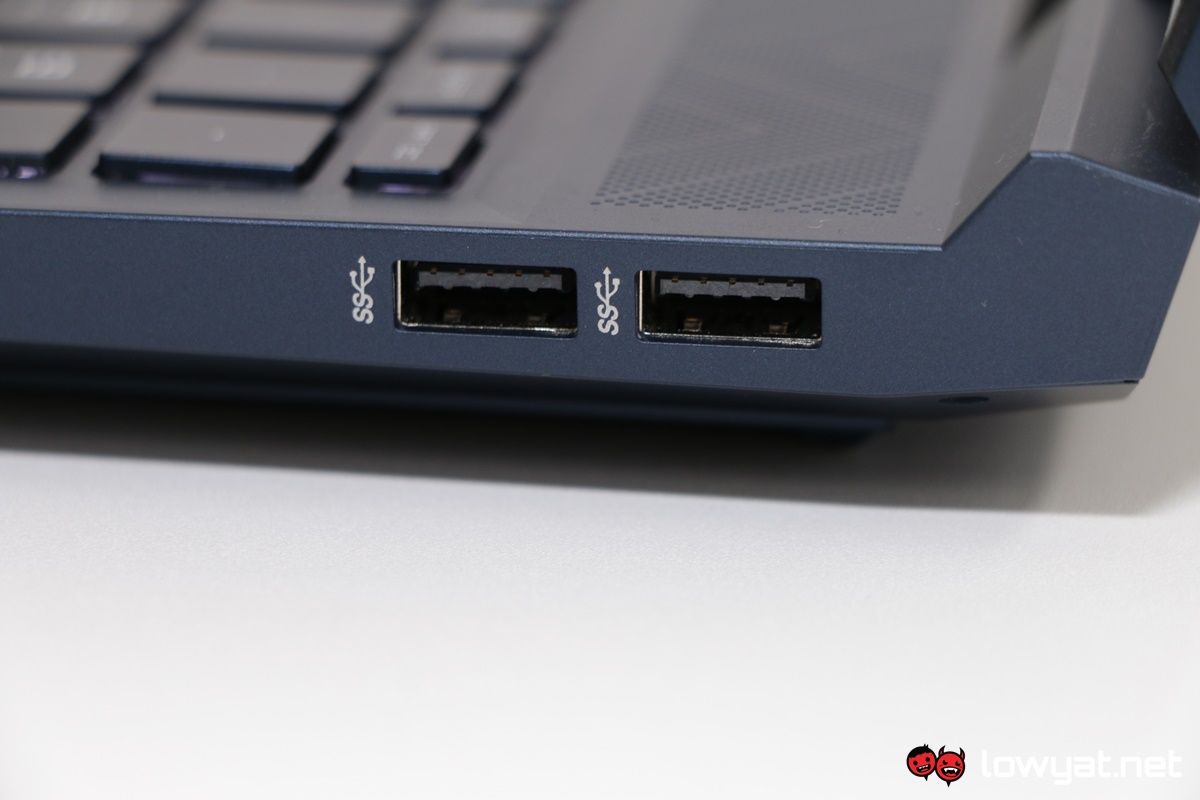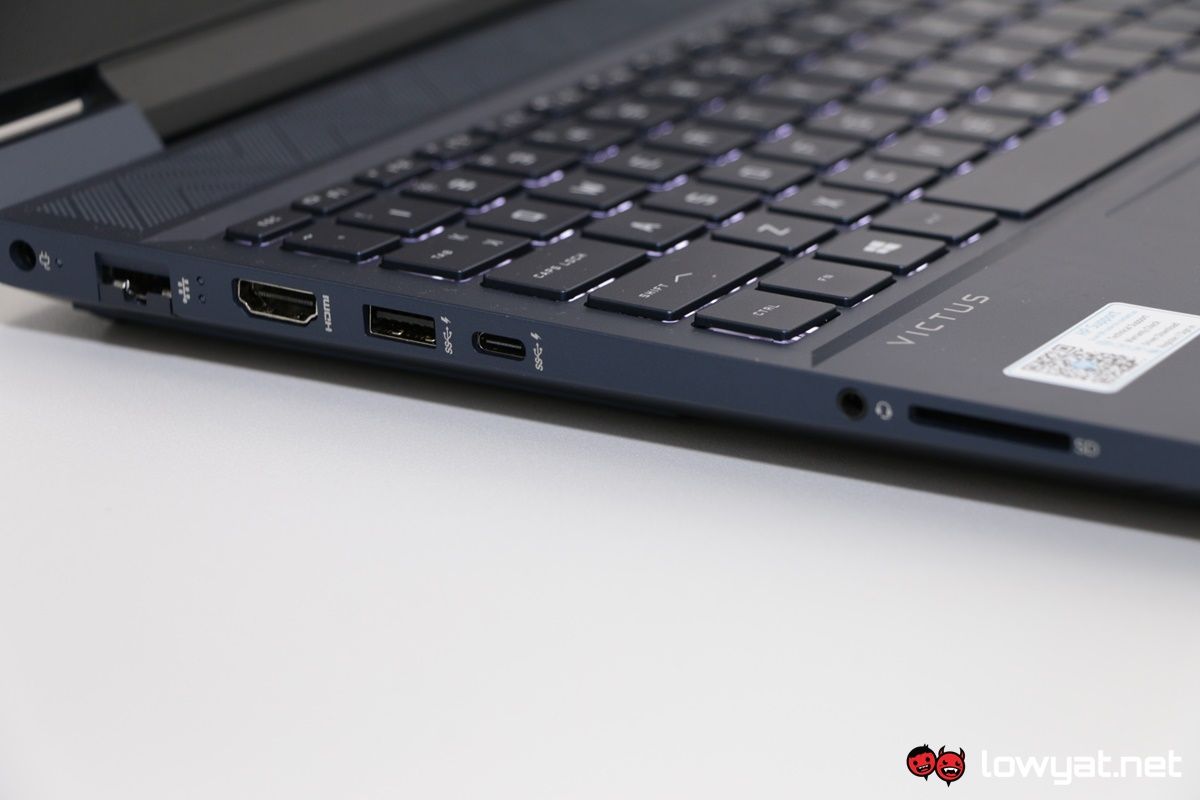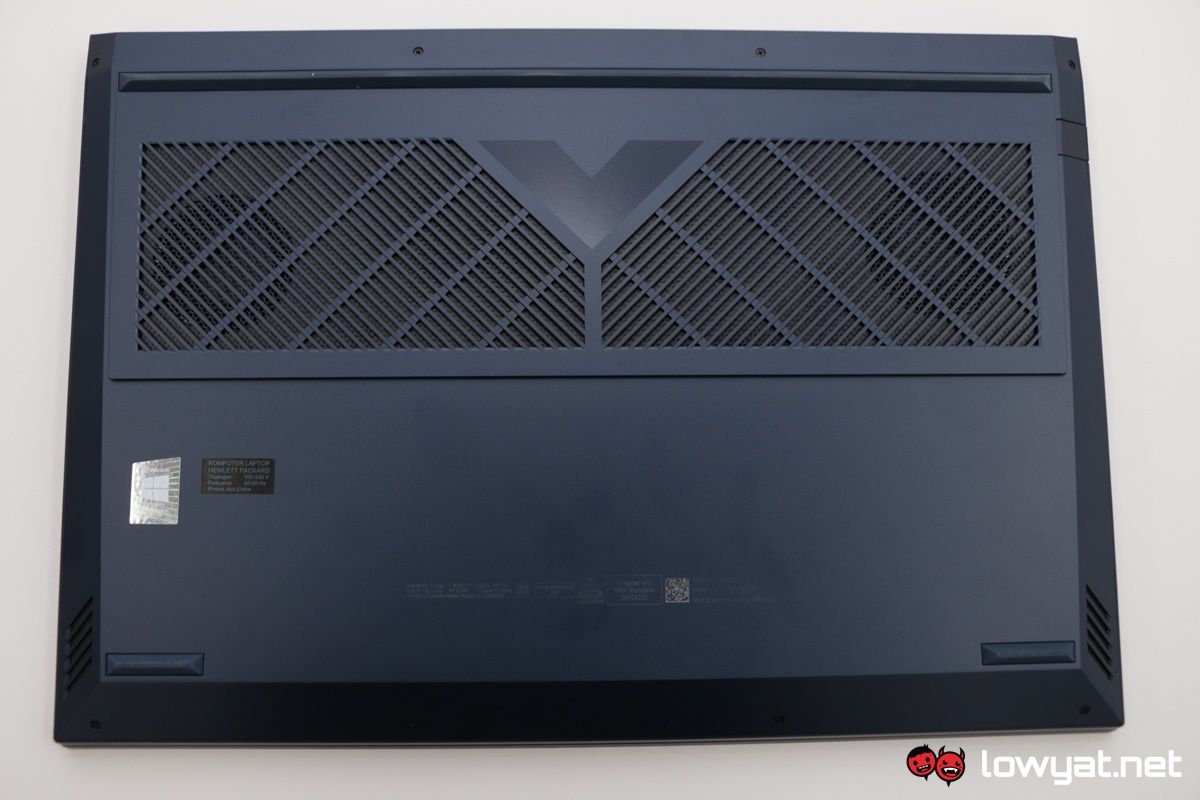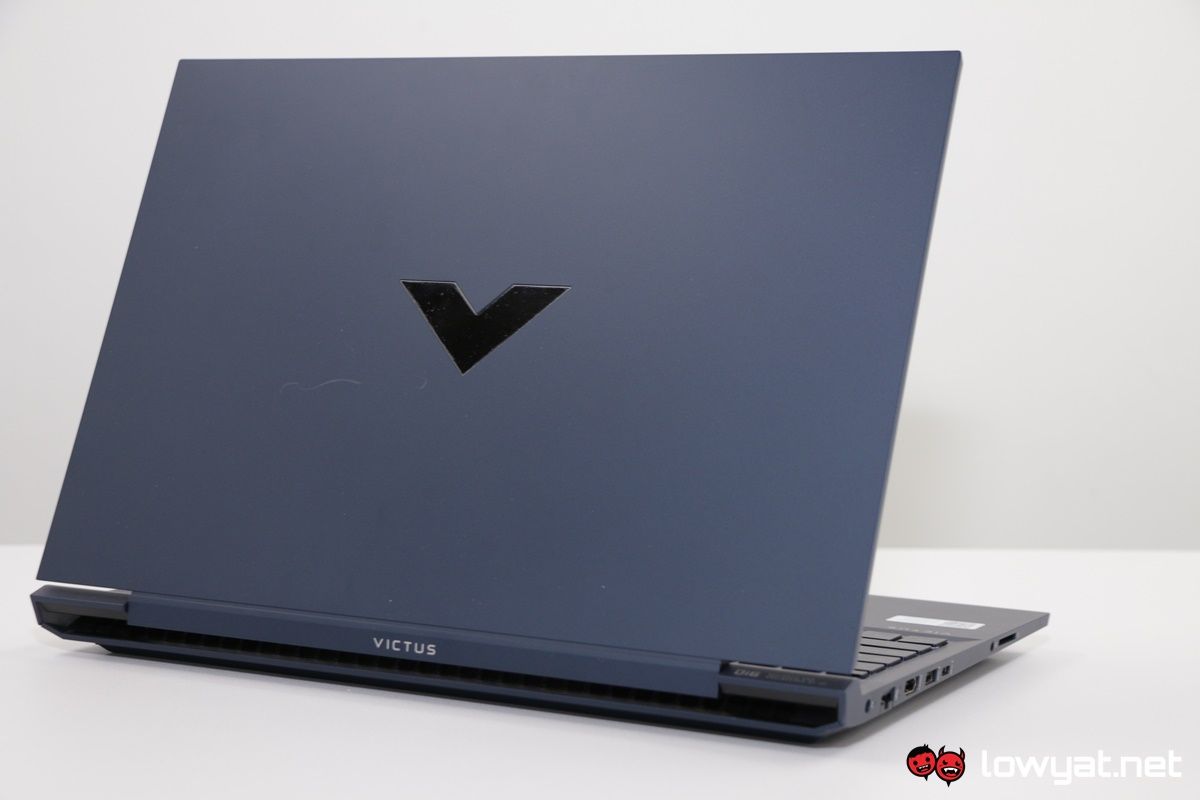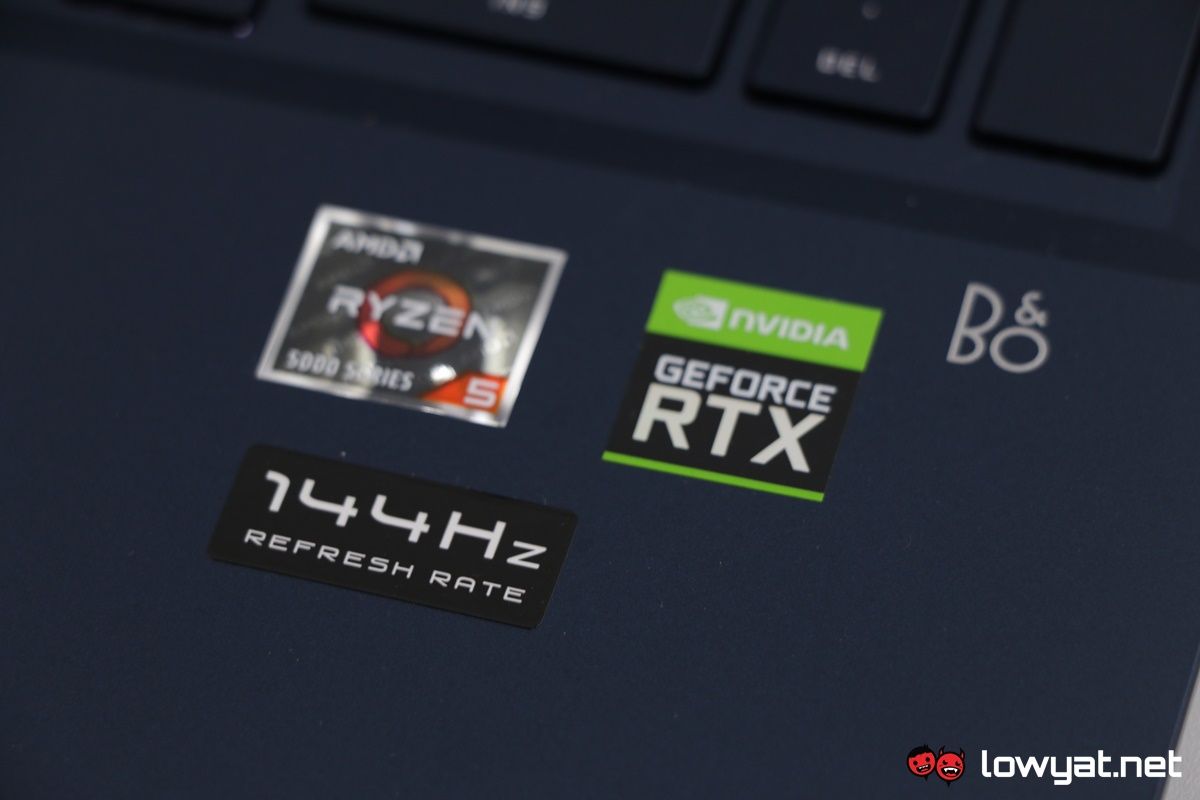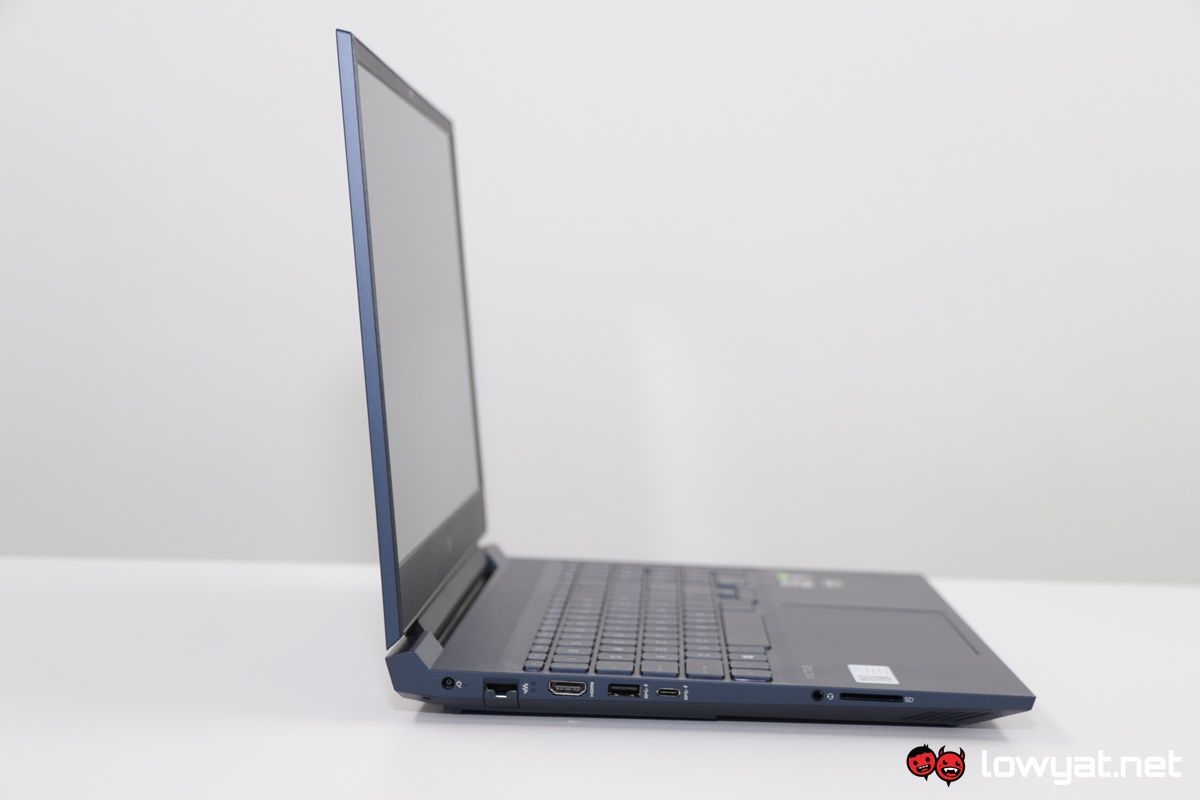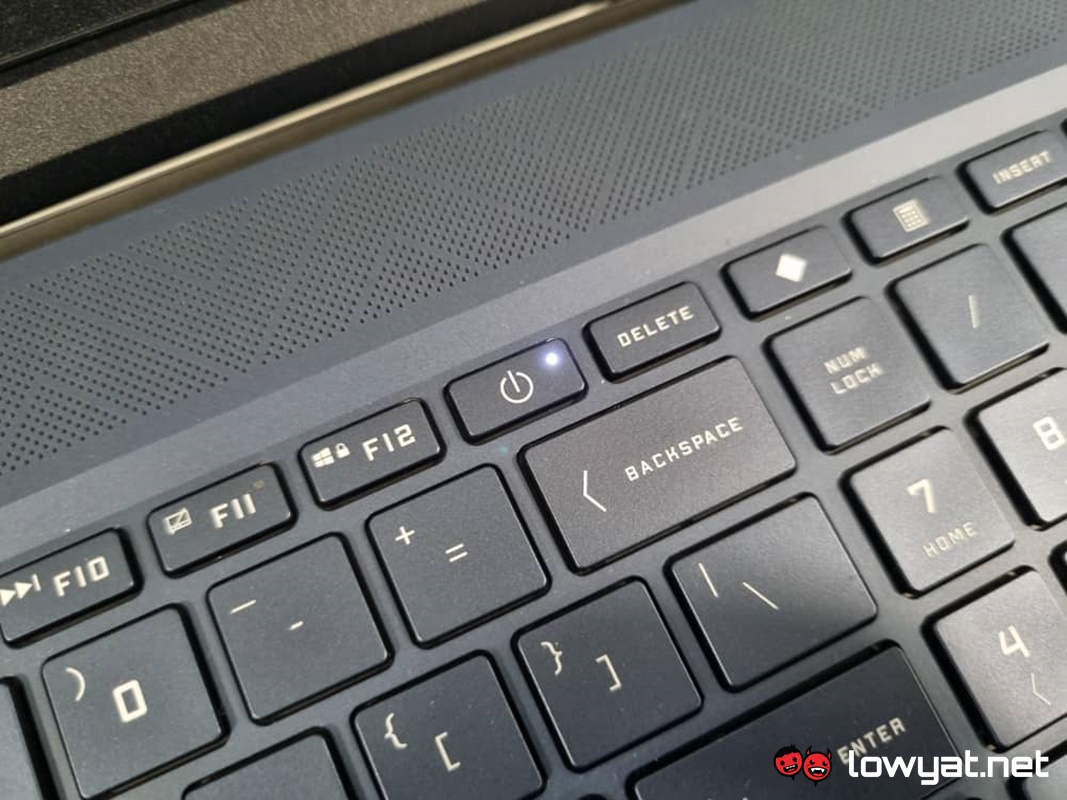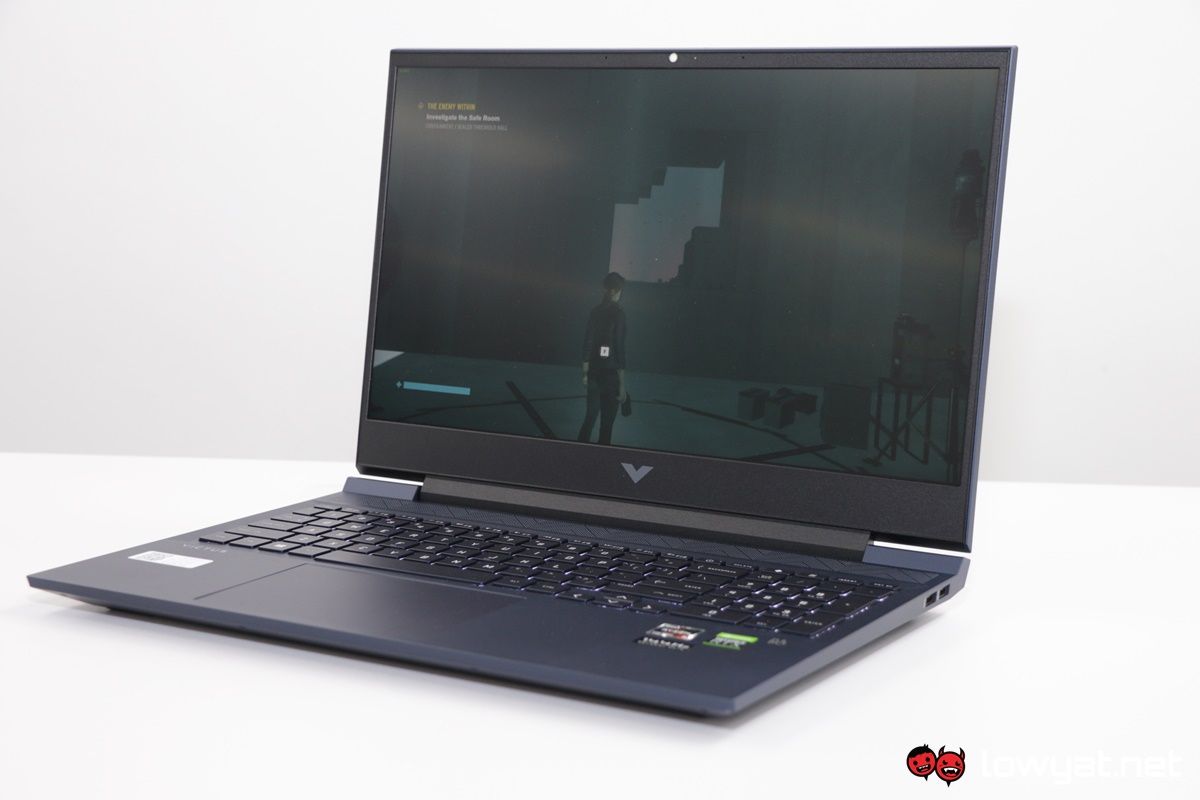I’ve said this many a times in my reviews that the ongoing chip shortage isn’t doing anyone any favours and truth be told, it never gets any easier. Of course, if you are resourceful, you could always veer off to the path of portable gaming and the mobile warrior. I am, of course, speaking about the gaming laptop and like all components, these too are available in packages ranging from entry-level to premium, high-end desktop replacements.
The HP Victus, in this case, is designed and made to the benefit of gamers within the entry-level category. At least, so it would seem.
Specification
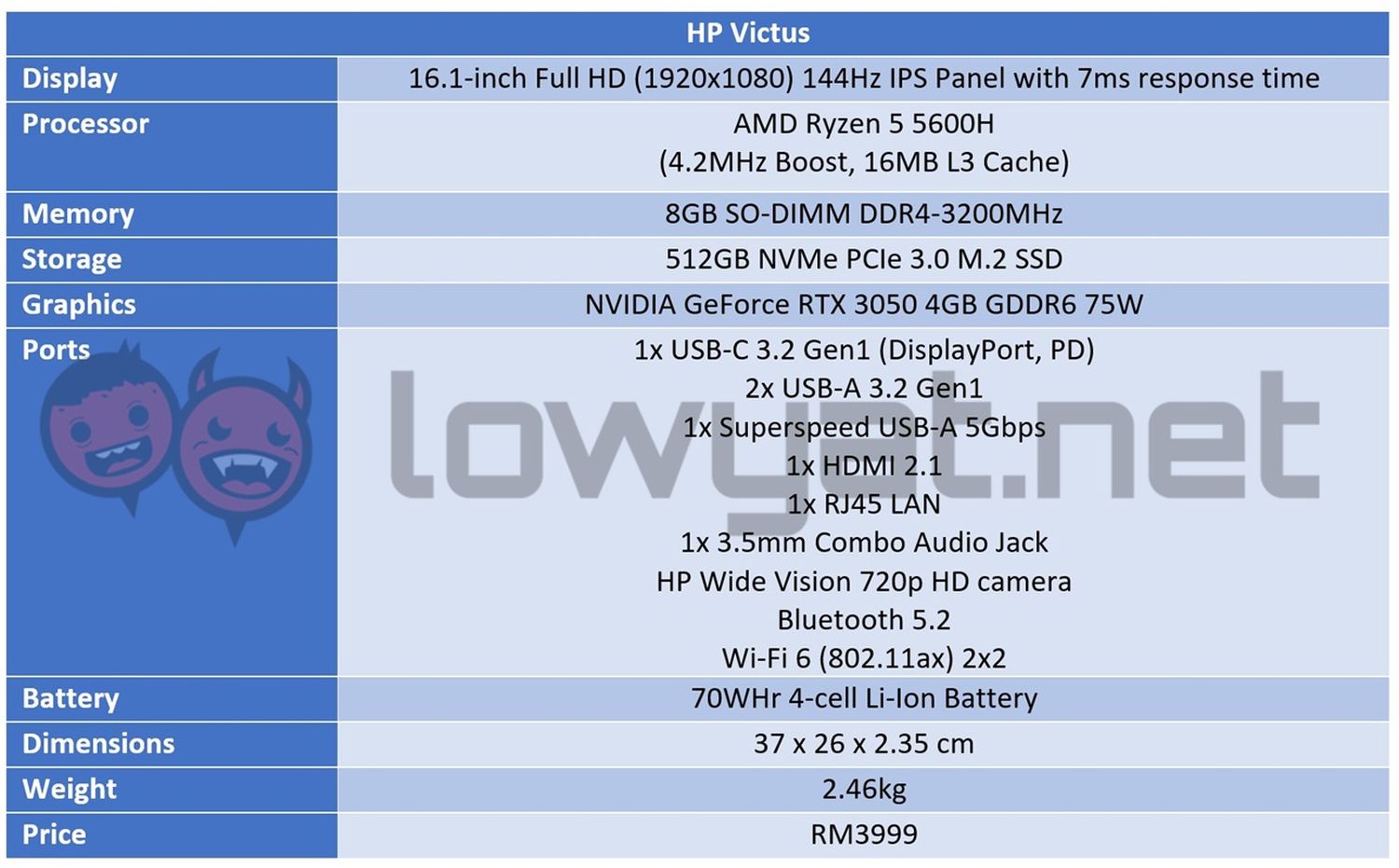
As far as hardware specifications go, The Victus is about as barebones as a laptop can go. At a starting point of RM3999, HP is offering an AMD Ryzen 5 5600H mobile CPU and NVIDIA GeForce RTX 3050 mobile GPU. The discrete GPU is, in and of itself, an upgrade too, as the initial GPU being offered with the Victus was the less powerful GTX 1650.
The main issue I have with the laptop, however, is limited amount of RAM and storage off-the-shelf; it only comes with 8GB DDR4-3200 memory and 512GB of PCIe Gen3 storage, and while there is room beneath the hood for expansion, HP doesn’t seem to actively offer customers such options on its product page, which just doesn’t sit right with me. But more on that later.
Design
As far as aesthetics go, the Victus isn’t looking to score any points in the “Outstanding Category”, with its overall design. At a glance, the laptop shows off clean, sharp, machined cuts with its edges. Around the back, the laptop sports a “V” logo emblazoned on the cover, just big enough that it should get heads of those curious enough turning. On a related note, HP is choosing to employ a floating hinge design rather than the typical dual hinges at each edge. In all honesty, I have always preferred this hinge design over the latter, as it provides significantly more durability and less flexing at the base of the display, somewhat.
Speaking of which, I find it to be a little bit of a surprise that the 16.1-inch panel of the Victus has a 144Hz refresh rate, although when you consider that this laptop is designed with a modicum of gaming pedigree, it’s safe to say that the fixture is becoming more commonplace and widely available to laptops across all cost segments. Cast your gaze down to the base and what I am greeted with is a full-sized keyboard that, dare I say it, looks like it was crammed into the small space at the last minute.
Chassis likes to flex and bend, and not in a good way.
Then there’s the overall build and feel of the chassis of the Victus. As mentioned, the design of the laptop isn’t anything to shout about and on top of that, it isn’t the most solid laptop I’ve handled to date. Despite the clean aesthetics, almost every part of the base feels hollow; the base bows and bends by a significant amount with the slightest amount of pressure but on the plus side, there is no squeaking.
Moving on, the Victus does feature a healthy number of I/O ports. You’ve got a LAN port and HDMI 2.1 port, along with several USB-A ports and a single USB-C 3.2 port, so you aren’t left wanting or yearning with the desire to physically connect devices to it. Oh, and there’s even a full-sized SDCard reader on the side too.
User Experience
I’m going to be blunt here: as far as entry-level gaming laptops go, the Victus is far from what I would consider an optimum or ideal overall experience. Let’s start by speaking about the laptop being my daily driver: from just typing on this laptop, I can feel the laptop actually shake from the overall motion and cadence from the act. If that wasn’t bad enough, there’s also another issue with the keyboard: space.
Having a full-sized keyboard in a confined space isn’t a comfortable experience.
While the prospect of having all the keys that only a full-sized keyboard can provide, it’s a whole different ball game when the subject of space, or lack thereof, becomes a concern. In the case of the Victus, HP’s plan for the keyboard is clearly an ambitious one, but that’s all it is: ambition. Because of the tight fit, both my hands are forced to dramatically shift to the left if I want to type, and more often than not, my right ring and little fingers find themselves accidentally hitting the numeric pad, instead of the keys I actually want to hit.
It doesn’t end there either. Typically, most laptops would section off its power button to the far-right corner or, in the case of ASUS’ ROG Zephyrus laptops, the button is given their very own accommodation, away from the rest. But, yet again, that is clearly not the case with the Victus. In my case, it took me nearly a minute of searching before I found it nestled right between the F12 and Delete key.
Moving forward, there is the general performance of the Victus. To quickly recap, this machine is running on a Ryzen 5 5600H, 8GB DDR4-3200 RAM, and an NVIDIA GeForce RTX 3050 mobile GPU; not too shabby for an entry-level laptop. However, and as I’m sure you may have surmised from that shortlist, having just the bare minimum of 8GB of memory really doesn’t cut the mustard for most gaming laptops these days, and it shows in the Victus. Even worse and based on what I can see on HP’s product page, the offer on this laptop is as is, meaning that if you want to upgrade your memory capacity, you’re left to fend for yourself.
Booting up the Victus takes considerably longer, as do installed apps after Windows has booted up. In addition, there’s the age-old issue of lag whenever too many tabs are opened in the browser, but then again, this also kind of depends on the browser you use.
In regards to the Victus’ battery endurance, it only managed to provide me with just short of six hours of continuous usage on a full charge, whereas “on and off” use of it (read: being on the move, opening it to type up a quick article, etc.) nets that number closer to eight hours.
144Hz display is nice to have but feels unnecessary.
On another note, while having a Full HD display with a high 144Hz refresh rate is an enjoyable experience, I can’t help but feel that it’s an unnecessary addition to the laptop, especially when you consider the hardware inside this model. On the highest graphics preset, the Victus and its hardware averages between 40 and 50 fps for all titles, while the title with the lowest average frames is Cyberpunk 2077 with the RTX feature set to Balanced. Having said all that, even I were to reduce the graphics presets of all titles to Medium, none of the test titles even managed to break pass the 100 fps mark.
Again, to be clear, I’m not saying that the choice of CPU and GPU are bottom-barrel SKUs of their respective makers; the 5600H is a very serviceable CPU and even better at keeping high temperatures at bay, never going above the 80°C mark, while the RTX 3050 runs games almost flawlessly on most titles, and effortlessly with the ones that support DLSS. In fact, the only title I am unable to boot up and run is DOOM Eternal due to some error. As for operating temperature, the GPU came close to 80°C but never actually hitting that peak.
Benchmarks
Competition
If you’re looking for alternatives within the entry-level gaming laptop segment, there are obviously options for you to choose from. Here are two options that I believe are bonafide contenders to the HP Victus.
ASUS TUF Gaming A15
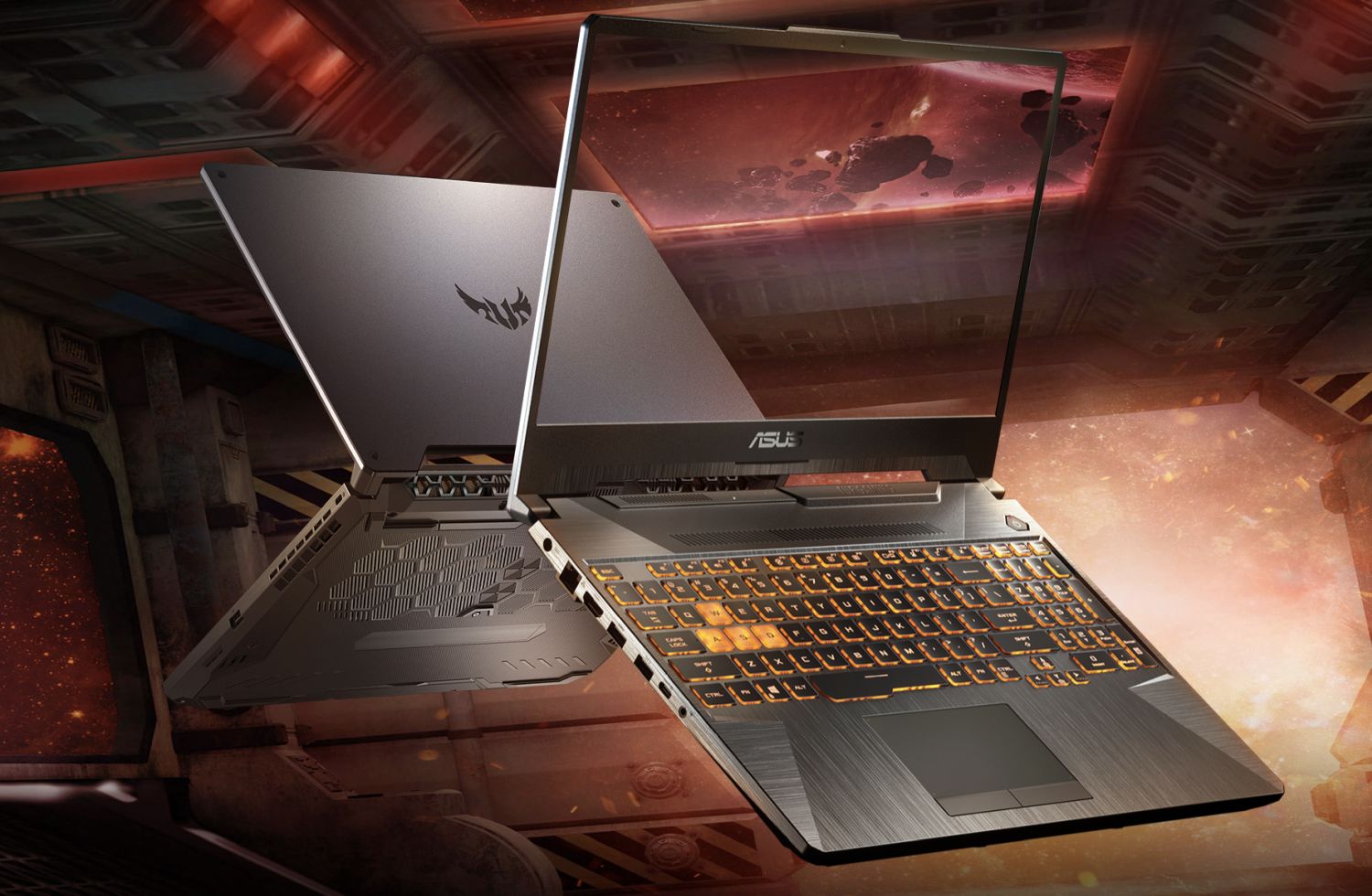
The ASUS TUF Gaming series is essentially the brand’s own entry-level lineup for the masses and yet, I believe the overall design and feel of these laptops have a tendency to stand out over the HP Victus. Specs-wise, the bare bones SKU sports a beefier AMD Ryzen 7 5800H, 8GB DDR4-3200, a 512GB NVMe PCIe 3.0 storage, and an NVIDIA GeForce RTX 3050.
Additionally, the TUF Gaming A15’s display is a 15.6-inch Full HD IPS panel and has a 144Hz refresh rate. Powering all these components though, is a larger 90WHr, 4-Cell battery. The only drawback to the A15 though, is that it actually costs more than the Victus at RM4299.
MSI Alpha 15 AMD Advantage Edition
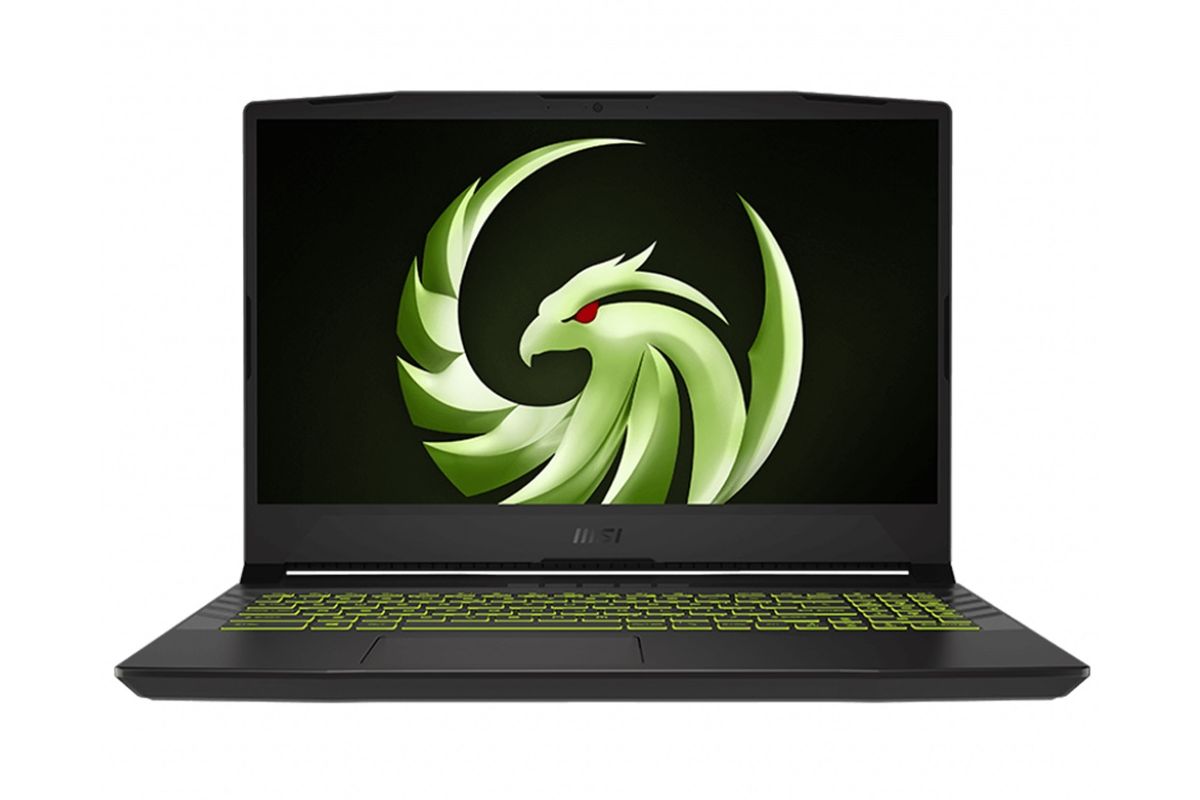
For those that are willing to walk down the route of a full AMD-furnished gaming laptop, there is the Alpha 15, MSI’s AMD Advantage Edition machine. Out of the box, the machine sports a Ryzen 5 5600H, 16GB DDR4-3200MHz RAM, and instead of a GeForce RTX 30 series GPU, you get a Radeon RX 6600M mobile GPU with 8GB GDDR6 graphics memory.
On top of that, the laptop also comes with 512GB of NVMe Gen3 storage, Wi-Fi 6E connectivity, as well as a large 90 WHr 4-cell battery to power it all. Of course, all this hardware means that the Alpha 15 costs a premium at RM5399 but considering the hardware you’re getting over the Victus, it’s hard to complain.
Conclusion
As far as entry-level gaming laptops go, the HP Victus feels like an oddity, and not in the ugly duckling kind of way. On one hand, I get that HP has to strike a balance with the performance-per-ringgit ratio but on the other hand – and given the alternatives that are out there – I firmly believe that the brand should be able to offer slightly more to consumers.
The HP Victus is far from a bad choice for entry-level gaming laptops, but it isn’t the best either.
At RM3999, I honestly believe the one bump up to the Victus would be an additional 8GB stick of DDR4 RAM, but again, it’s not an option that HP is prepared to willingly offer to its customers. And then there’s the issue about the keyboard. As much as I advocate for the use of a full-sized keyboard, it would have made more sense for the company to employ a ten-keyless keyboard model.
Having said all that, if you’re a diehard fan of HP products and you think you can do some form of magic, go right ahead.
Photography by John Law.
Follow us on Instagram, Facebook, Twitter or Telegram for more updates and breaking news.


